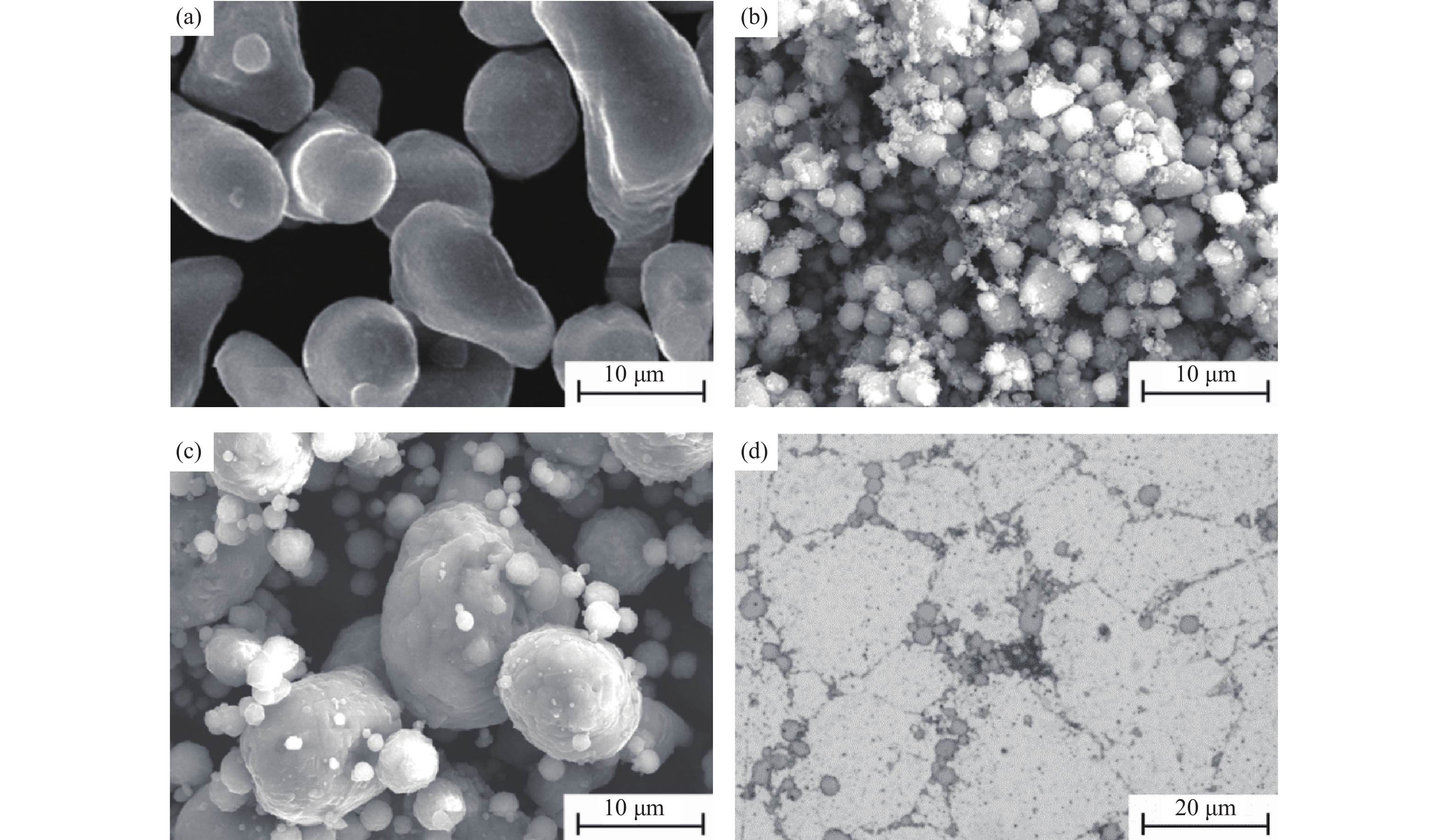| [1] |
Jung J G, Ahn T Y, Cho Y H, et al. Synergistic effect of ultrasonic melt treatment and fast cooling on the refinement of primary Si in a hypereutectic Al–Si alloy. Acta Mater, 2018, 144: 31 doi: 10.1016/j.actamat.2017.10.039
|
| [2] |
Lasa L, Rodriguez-Ibabe J M. Effect of composition and processing route on the wear behaviour of Al–Si alloys. Scr Mater, 2002, 46(6): 477 doi: 10.1016/S1359-6462(02)00020-9
|
| [3] |
Li Y, Li J P, Liu L, et al. Evolution mechanism of cast Al–Si alloy surface roughness at high temperature. Chin J Nonferrous Met, 2021, 31(8): 2115 doi: 10.11817/j.ysxb.1004.0609.2021-39721李阳, 李建平, 刘磊, 等. 铸造Al–Si合金表面粗糙度的高温演变机制. 中国有色金属学报, 2021, 31(8): 2115 doi: 10.11817/j.ysxb.1004.0609.2021-39721
|
| [4] |
Zhao N, Ma H J, Hu Z L, et al. Microstructure and mechanical properties of Al–Mg–Si alloy during solution heat treatment and forging integrated forming process. Mater Charact, 2022, 185: 111762 doi: 10.1016/j.matchar.2022.111762
|
| [5] |
Flemings M C. Behavior of metal alloys in the semisolid state. Metall Trans B, 1991, 22B: 269
|
| [6] |
Zhao L P, Zhang Y Z, Li Y Y. Ti element analysis in heat treatment process of A356 aluminum alloys. Powder Metall Technol, 2020, 38(4): 306 doi: 10.19591/j.cnki.cn11-1974/tf.2019050004赵利平, 张彦陟, 李云义. A356铝合金热处理工艺中Ti元素分析. 粉末冶金技术, 2020, 38(4): 306 doi: 10.19591/j.cnki.cn11-1974/tf.2019050004
|
| [7] |
Zhao Z D, Chen Q, Wang Y B, et al. Microstructural evolution of an ECAE-formed ZK60-RE magnesium alloy in the semi-solid state. Mater Sci Eng A, 2009, 506: 8 doi: 10.1016/j.msea.2008.12.042
|
| [8] |
Takagi H, Uetani Y, Dohi M, et al. Effects of mechanical stirring and vibration on the microstructure of hypereutectic Al–Si–Cu–Mg alloy billets. Mater Trans, 2007, 48(5): 960 doi: 10.2320/matertrans.48.960
|
| [9] |
Liu D, Atkinson H V, Jones H. Thermodynamic prediction of thixoformability in alloys based on the Al–Si–Cu and Al–Si–Cu–Mg systems. Acta Mater, 2005, 53(14): 3807 doi: 10.1016/j.actamat.2005.04.028
|
| [10] |
Shabestari S G, Abdi M, Naghdali S. Effect of thixoforming and precipitation hardening on microstructure and mechanical properties of Al–10.5Si–3Cu–0. 2Mg alloy produced by strain induced melt activation process. J Mater Res Technol, 2021, 15: 4981
|
| [11] |
Bolouri A, Kang C G. Correlation between solid fraction and tensile properties of semisolid RAP processed aluminum alloys. J Alloys Compd, 2012, 516: 192 doi: 10.1016/j.jallcom.2011.12.045
|
| [12] |
Alhawari K S, Omar M Z, Ghazali M J, et al. Microstructural evolution during semisolid processing of Al–Si–Cu alloy with different Mg contents. Trans Nonferrous Met Soc China, 2017, 27(7): 1483 doi: 10.1016/S1003-6326(17)60169-9
|
| [13] |
German R M, Suri P, Park S J. Review: liquid phase sintering. J Mater Sci, 2009, 44: 1 doi: 10.1007/s10853-008-3008-0
|
| [14] |
Huang P Y. Theory of Power Metallurgy. 2nd Ed. Beijing: Metallurgical Industry Press, 2004黄培云. 粉末冶金原理. 2版. 北京: 冶金工业出版社, 2004
|
| [15] |
Du Y, Schuster J C, Liu Z K, et al. A thermodynamic description of the Al–Fe–Si system over the whole composition and temperature ranges via a hybrid approach of CALPHAD and key experiments. Intermetallics, 2008, 16(4): 554 doi: 10.1016/j.intermet.2008.01.003
|




 下载:
下载:







